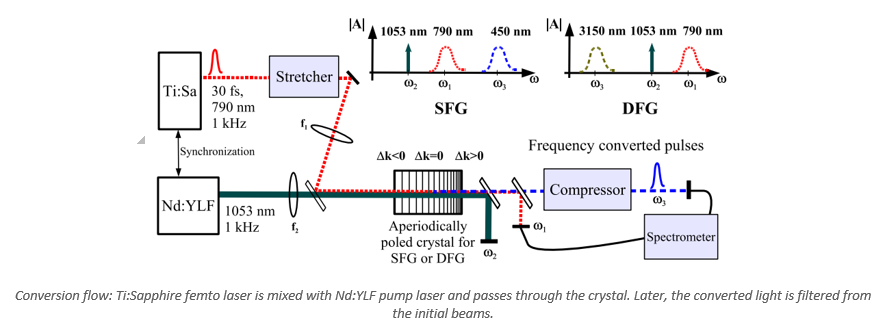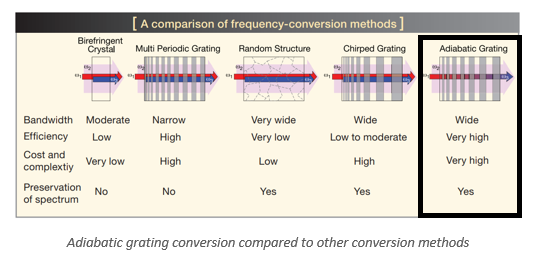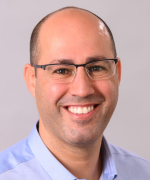Ultra-fast lasers are highly used in both academia (to monitor chemical & biological reactions) and industry (for submicron resolution products). Mainly, the emission source of these lasers is Ti-Sapphire, which produces very short pulses (about ten femtoseconds – 10-14sec) but only in the Near Infrared (NIR) region (700nm-1000nm). Producing ultra-fast pulses in the visual range is very limited. Prof. Yaron Silberberg and his coworkers developed a technique for converting these ultra-fast pulses in the NIR to the visible spectrum while keeping the pulse duration in a wide range of wavelengths and maintaining high conversion efficiency.
Femto-lasers are highly important devices in both academia and industry. In academia, these lasers are mainly used for reaction studies (Nobel prize 1999) where the laser pulse is shorter than the reaction duration. In the industry, Femto lasers are being used to create high-resolution products. The high resolution is due to the high selectivity of etching between the illuminated/non-illuminated area, which are caused by low heat transfer in the Femto timescale. One of the limits to gain even higher resolution is the optical resolution, which is inversely correlated with the wavelength. Most Femto-lasers are based on Ti-sapphire crystals, limited to the NIR spectral region (700nm-1000nm). Therefore, the capabilities of these lasers is limited in terms of matter-radiation interactions and resolution.
While most conversion systems are limited to a narrow range of wavelengths or suffer from low efficiency, this system called “adiabatic grating” overcomes both issues. This system can operate on sum-frequency generation (SFG) and difference frequency generation (DFG)[i].


[i] Suchowski, H., Bruner, B.D., Ganany-Padowicz, A. et al. Adiabatic frequency conversion of ultrafast pulses. Appl. Phys. B 105, 697–702 (2011). https://doi.org/10.1007/s00340-011-4591-3
This device is based on a new method of adiabatic wavelength conversion. The device works whereby a strong narrow-band pump is introduced into the crystal and a weaker pulse to be converted. This conversion is realized in a quasi-phase-matched nonlinear crystal, where the period is tuned adiabatically from strong negative phase-mismatch to strong positive phase-mismatch (or vice versa). This results in the efficient transformation of the weaker pulse.
Applications
- High-resolution lithography & texturing
- Generation of ultrafast visible radiation for chemical & biological research
Advantages
- High efficiency of the conversion process.
- Simple and compact
- Insensitive to the deviations in alignment, no dependence of the angle incidence beam or of temperature
- Frequency converter of both broadband signals and ultra-short pulses.
This technology can be implemented in existing ultra-fast lasers devices for enabling visual irradiation mode.

